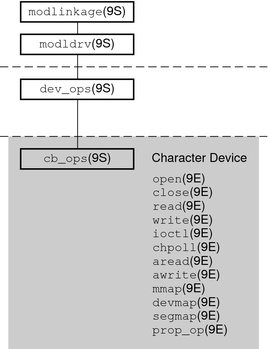| Skip Navigation Links | |
| Exit Print View | |

|
Writing Device Drivers Oracle Solaris 11.1 Information Library |
| Skip Navigation Links | |
| Exit Print View | |

|
Writing Device Drivers Oracle Solaris 11.1 Information Library |
Part I Designing Device Drivers for the Oracle Solaris Platform
1. Overview of Oracle Solaris Device Drivers
2. Oracle Solaris Kernel and Device Tree
5. Managing Events and Queueing Tasks
7. Device Access: Programmed I/O
10. Mapping Device and Kernel Memory
13. Hardening Oracle Solaris Drivers
14. Layered Driver Interface (LDI)
Part II Designing Specific Kinds of Device Drivers
15. Drivers for Character Devices
Character Device Autoconfiguration
Device Access (Character Drivers)
open() Entry Point (Character Drivers)
close() Entry Point (Character Drivers)
Differences Between Synchronous and Asynchronous I/O
Multiplexing I/O on File Descriptors
ioctl() Entry Point (Character Drivers)
I/O Control Support for 64-Bit Capable Device Drivers
32-bit and 64-bit Data Structure Macros
How Do the Structure Macros Work?
Declaring and Initializing Structure Handles
Operations on Structure Handles
18. SCSI Host Bus Adapter Drivers
19. Drivers for Network Devices
Part III Building a Device Driver
22. Compiling, Loading, Packaging, and Testing Drivers
23. Debugging, Testing, and Tuning Device Drivers
24. Recommended Coding Practices
B. Summary of Oracle Solaris DDI/DKI Services
C. Making a Device Driver 64-Bit Ready
Figure 15-1 shows data structures and routines that define the structure of a character device driver. Device drivers typically include the following elements:
Device-loadable driver section
Device configuration section
Character driver entry points
The shaded device access section in the following figure illustrates character driver entry points.
Figure 15-1 Character Driver Roadmap

Associated with each device driver is a dev_ops(9S) structure, which in turn refers to a cb_ops(9S) structure. These structures contain pointers to the driver entry points: